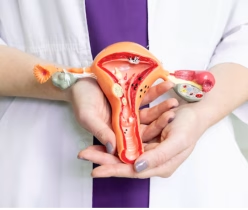Don't miss our updates



On the occasion of World Health Day, it is important to highlight the relevance of timely information when making decisions about Assisted Reproduction treatment, since often, due to lack of knowledge on the subject, both of reproductive health and of technologies to conceive, too much time is allowed to pass, and there are definitely alternatives to achieve a pregnancy or carry it to term. Reproductive health misinformation This misinformation has led many women to delay adequate reproductive health treatment, or even to seek it at all, either because of social issues or simple ignorance of an underlying condition that affects their ability to become mothers. The latent problem lies in the fact that infertility is misunderstood and therefore poorly addressed and treated, despite the fact that more than 180 million people worldwide have problems conceiving (WHO, 2023). A Latin American-wide problem It is common for awareness campaigns or promotion of assisted reproduction as the best treatment for infertility to have little visibility, which ends up preventing women and couples from having enough information to make an informed decision regarding what steps to take to become parents, or to become at least a possibility to be considered as an alternative. It is common that awareness campaigns or promotion of Assisted Reproduction such as In Vitro Fertilization and Artificial Insemination have little visibility, which ends up preventing women, same-sex couples, and people with problems to conceive from having enough information to make an informed decision regarding their reproductive health. Infertility should not be taboo It is estimated that women with a fertility condition, whether primary or secondary, may take 2 to 3 years to see a specialist, because of “shame”, “guilt”, because of ideas imposed by society in general, but above all, because of misinformation and misdiagnosis. And there are those who take even longer, or who do not even consider it. Reproductive health starts with family planning, from the moment a woman decides to become a mother and begin her search process. because although sometimes it may not seem like it, there are different ways to get to this point, not only when there is a union as a couple; and it all boils down to the fact that we need to talk about reproductive health. Ver esta publicación en Instagram Una publicación compartida por Ingenes Institute (@ingenesinstitute) Seeking information is a fundamental step, and approaching health professionals is indispensable. Just as someone with the flu goes to the doctor, women who are looking to become mothers and have not been able to do so, have the option of turning to doctors specialising in Assisted Reproduction, to find an alternative, and even to have family planning, and to decide on their maternity. Reproductive and sexual health for an integral wellbeing Reproductive health is about women’s physical and mental well-being within a social environment, so breaking taboos and talking about sexuality is essential to find ways to live it safely and satisfactorily, and to decide about reproduction, how to procreate and even find the ideal time to do so. If a woman cannot have children “naturally”, or postpones childbearing, it is not that there is something wrong with her, on the contrary, this is the starting point to look beyond, it is an opportunity for dissemination, to make alternatives known, to open up to the technologies that science has contributed, to remove prejudices, “guilt”, and to talk about the important issues, to talk about reproductive health. Today is the ideal time not only to demand that health authorities provide us with more information about sexuality, but also to investigate on our own how and when we might become mothers. On World Health Day, beyond mentioning all the progress that has been made, we must begin to question ourselves more about sexuality, seek accurate information, know about contraceptive methods and risks, know about infections and/or sexually transmitted diseases, and above all, recognise that talking about reproductive health is talking about our rights as women and that we can decide about motherhood, natural or not. We are at the right time to start breaking paradigms, touching on Gynecological issues, touching on women’s sexuality.

Are you in the exciting stage of motherhood and wondering how to calculate that special moment when you will meet your baby? Navigating the stages of pregnancy, especially if it’s your first time, can seem like a challenge full of uncertainty and wonder. Understanding the expected delivery date The key tool in this journey is Naegele’s Rule, a tool that lights the way toward estimating your expected due date (FPD). This method starts from the first flash of your last menstrual cycle, extending over 280 days or 40 weeks, marking the standard rhythm of a pregnancy. It is based on the premise of a 28-day cycle with ovulation coming into play around day 14. But what happens if your cycle decides to follow its script, different from the average 28 days? This is where Naegele’s Rule becomes a guide rather than mathematical accuracy. Despite its usefulness, we must remember that only a small percentage of babies choose to arrive precisely on the calculated date. Most births occur anytime between 37 and 42 weeks, considered within a normal and healthy range. The importance of calculating the PPF Although the due date may vary, calculating the PPF is essential. This information not only allows your doctor to properly monitor the development of the pregnancy, scheduling exams and analyses at key moments but also gives you a reference on the changes and symptoms you experience throughout this stage. It’s a map of sorts that helps you navigate the sometimes turbulent waters of pregnancy. How to use Naegele’s rule and beyond If technology is your thing, the pregnancy calculator is ready to become your new best friend, simplifying this calculation. But if you prefer the traditional method, you can immerse yourself in the adventure of calculating it manually, adjusting it according to the length of your menstrual cycle for a more personalized estimate. Upon discovering your pregnancy, you might be surprised to learn that, according to the medical calendar, you are already progressing into week 4, even though conception occurred only two weeks ago. This standardized method of counting weeks may be confusing at first, but it provides a clear framework for medical monitoring of pregnancy. Dividing pregnancy into trimesters Each trimester of your pregnancy is a unique chapter in this story, from the first emotion to the final preparations for delivery. The first trimester introduces you to this new world, the second takes you through moments of calm and growth, and the third trimester sets the stage for the grand finale: meeting your baby. So if you’re ready to dive even deeper into understanding your pregnancy, numerous online tools can help you unlock the mysteries of this wonderful time, offering you clarity and support every step of the way. We encourage you to look for a reliable pregnancy calculator on websites specializing in prenatal care. Remember, no matter where you are in your pregnancy, we are here to provide you with information and support, guiding you on this incredible adventure toward the arrival of your baby.